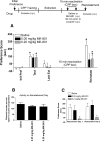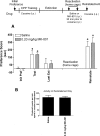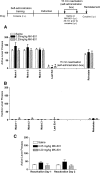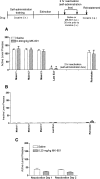The NMDA antagonist MK-801 disrupts reconsolidation of a cocaine-associated memory for conditioned place preference but not for self-administration in rats
- PMID: 19050157
- PMCID: PMC2632842
- DOI: 10.1101/lm.1152808
The NMDA antagonist MK-801 disrupts reconsolidation of a cocaine-associated memory for conditioned place preference but not for self-administration in rats
Abstract
Recent research suggests that drug-related memories are reactivated after exposure to environmental cues and may undergo reconsolidation, a process that can strengthen memories. Conversely, reconsolidation may be disrupted by certain pharmacological agents such that the drug-associated memory is weakened. Several studies have demonstrated disruption of memory reconsolidation using a drug-induced conditioned place preference (CPP) task, but no studies have explored whether cocaine-associated memories can be similarly disrupted in cocaine self-administering animals after a cocaine priming injection, which powerfully reinstates drug-seeking behavior. Here we used cocaine-induced CPP and cocaine self-administration to investigate whether the N-methyl-D-aspartate receptor antagonist (+)-5methyl-10,11-dihydro-5H-dibenzo[a,d]cyclohepten-5,10-imine maleate (MK-801) given just prior to reactivation sessions would suppress subsequent cocaine-primed reinstatement (disruption of reconsolidation). Systemic injection of MK-801 (0.05 or 0.20 mg/kg administered intraperitoneally) in rats just prior to reactivation of the cocaine-associated memory in the CPP context attenuated subsequent cocaine-primed reinstatement, while no disruption occurred in rats that did not receive reactivation in the CPP context. However, in rats trained to self-administer cocaine, systemic administration of MK-801 just prior to either of two different types of reactivation sessions had no effect on subsequent cocaine-primed reinstatement of lever-pressing behavior. Thus, systemic administration of MK-801 disrupted the reconsolidation of a cocaine-associated memory for CPP but not for self-administration. These findings suggest that cocaine-CPP and self-administration do not use similar neurochemical processes to disrupt reconsolidation or that cocaine-associated memories in self-administering rats do not undergo reconsolidation, as assessed by lever-pressing behavior under cocaine reinstatement conditions.
Figures




References
-
- Alberini C.M. Mechanisms of memory stabilization: Are consolidation and reconsolidation similar or distinct processes? Trends Neurosci. 2005;28:51–56. - PubMed
-
- Bardo M.T., Valone J.M., Bevins R.A. Locomotion and conditioned place preference produced by acute intravenous amphetamine: Role of dopamine receptors and individual differences in amphetamine self-administration. Psychopharmacology. 1999;143:39–46. - PubMed
-
- Ben Mamou C., Gamache K., Nader K. NMDA receptors are critical for unleashing consolidated auditory fear memories. Nat. Neurosci. 2006;9:1237–1239. - PubMed
-
- Bernardi R.E., Lattal K.M., Berger S.P. Postretrieval propranolol disrupts a cocaine conditioned place preference. Neuroreport. 2006;17:1443–1447. - PubMed
-
- Bouton M.E. Context and behavioral processes in extinction. Learn. Mem. 2004;11:485–494. - PubMed
Publication types
MeSH terms
Substances
Grants and funding
LinkOut - more resources
Full Text Sources
Medical
